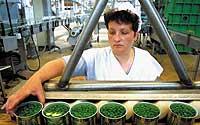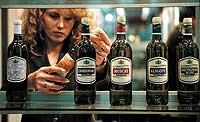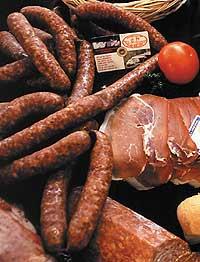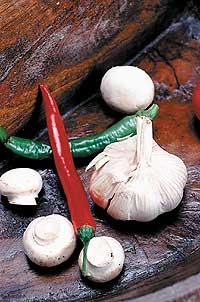Conserve or die

Much of the food industry budget is invested in conservation research. And it is no wonder that 20% of the food produced annually is lost. The main responsible for this loss are microorganisms, such as fungi, yeasts, bacteria... and some enzymes that contain the food itself. These microorganisms and enzymes must be combated if the consumer wants to receive quality products.
Formerly the fundamental thing was the long duration of the food. However, the current lifestyle makes the consumer look for other features, such as maintaining the organoleptic distinctives that the newly received product has. Today, the food that has lost taste or smell has little success, even if it remains very long. The consumer is increasingly demanding in buying and looks at its gastronomic characteristics as well as the price of food.
In addition, food is seen both as food and medicine, so it must be rich in nutrients such as vitamins and also must be safe to prevent disease transmission.
PuntaOver the centuries, human beings have used all the means at their disposal so that food can be kept longer. And today, state-of-the-art technology is still being used in the food industry. However, the experience of previous generations is also useful, and somehow the most traditional and advanced conservation methods are associated with food.

Basically, most conservation methods play with temperature. Pasteur realized that food was spoiled by microbes and that by warming food could be fought. The discovery was undoubtedly very valuable for the conservation of food.
Since then numerous techniques have been used to raise food temperature. One of the most novel techniques is omic heating, using alternating current to increase the temperature of the food and thus minimize its properties. Other techniques include infrared waves, microwaves and high-voltage pulses.
Logically, the chosen technique depends on the product; for example, fruit juices, milk and liquid egg can use high-voltage pulses, and ohmic heating with tomato sauce and cheese, which are current conductors. On other occasions, instead of heating, just cool down and the product is inserted into the refrigerator or freezer.
Temperature change can involve changes in product characteristics and the emergence of new innovative techniques in products at this risk. The application of high-pressure foods, for example, kills microorganisms and stops enzymatic activity. Avoiding enzymatic work means stopping reactions that damage food, so in addition to acting against microorganisms, it is very useful to inactivate enzymes.

At the moment, the high pressure is only applied with very good quality meat, especially because it is very expensive and can cause changes in the ingredients. There are many new technologies that have limitations to expand on the market: some methods are too expensive and others still need to be refined to be fully reliable.
There is more than one technique of social concern in the food industry. There are genetically modified vegetables, such as the transgenic tomato Flavr Savr. Before the radiation, people also appear suspicious. The method of preserving fruits and vegetables is ideal for some, but the rest fears that the ionizing radiation used is harmful.
However, irradiation has been accepted by the World Health Organization and the United Nations Food and Agriculture Organization and is used in the US. In Europe this method has not been successful.
The importance of packaging Consumers are increasingly demanding in the choice of products, and the first thing they see is packaging. As environmental concern increases, a smaller or less material container is sought. It used and threw the slogan a decade ago, and from today it will be used and eaten. It is the time of packaging that can be eaten.
Edible packaging can be made with wheat, milk or eggs and also with cellulose. They do not harm the environment, at least compared to synthetic ones, and experts investigate designs that help properly preserve food.
As for synthetic materials, they adapt packaging to food needs. In the case of vegetables and fruit, for example, the transformation of the atmosphere is common. This technique involves replacing the air in the container with another mixture of gases. The gas ratio is thoroughly controlled so that the food lasts as long as possible. It normally decreases the amount of oxygen and increases the amount of carbon dioxide to decrease the respiration of natural products, but also uses nitrogen and other gases.
In order for the atmosphere inside the container to be adequate, a flow of gases must occur. Permeable materials such as polyolefin, polystyrene or propylene are used for this purpose. Vegetables often come in polyolefin microcinito covers, keeping them fresh for a couple of weeks.
Microorganismsagainst microorganisms |

They have organic preservatives such as cheeses, hams, wines or vinegars. They are products created by the desire to preserve them, which are produced by fermentation and which are produced by microorganisms. Therefore, the persistence of these foods is ultimately microorganisms. These microorganisms do not allow the reproduction of the rest of the microorganisms, as they compete to grow in the same medium, which makes the food remain for a long time.
Currently, fermentation is used to obtain products of different flavors, smells and textures. However, this process has allowed the creation of new conservation techniques: the introduction of microorganisms that do not harm humans to prevent the presence of other microorganisms. For example, lactic bacteria produce antimicrobial substances and researchers have found that they help preserve fish.
Following this line of research, in a few years it will be possible to find on the market food protected by microorganisms.
Barrier technology There are eleven methods of food conservation, many still under investigation. And it seems that you are thinking about following all the lines of research, as the best results have been obtained using more than one technique at a time. Thus, micro-organisms that spoil food must overcome several barriers in order to reproduce and dominate food.
Research tries to put obstacles or barriers to microorganisms, looking for the barrier effect, the best way to combine several technologies. This combination not only depends on the food, but there are also other factors to consider, such as enzymatic reactions inside the food, the length of the product, the storage temperature, the pH of the medium, etc.
This synergy between conservation methods will result in a decrease in the use of preservatives, as in some way the most appropriate amount of preservatives will be calculated. More than 40 factors that act as barriers are already known. Combining them in the most efficient way is one of the challenges of the food industry.
Undoubtedly, in recent years there have been great advances. But the needs of society continually generate new challenges. And the lifestyle of modern society demands increasingly strict security measures and products as fresh as possible, but at the same time more durable. The food industry will work to meet the demands of society.
Botulism, risk of domestic preserves

In Euskal Herria there is a lot of habit of making preserves at home. On the coast is mainly preserved the beautiful and inside vegetables, vegetables and fruit, among others. Domestic preserves are made from very good quality products, but they can be very dangerous if not sterilized well.
The containers are closed in hot for sterilization, in order to prevent the death of microorganisms and the entry of air. But in some cases the bacillus Clostridium botulium increases. This bacillus produces a disease called botulism. Secretes a neurotoxin that prevents the expulsion of acetylcholine. The patient has muscle mobility problems, paralysis spreads slowly and may die drowned.
C. botulium
is not the only pathogenic bacteria present in food. Also known are some strains of Salmonella that produce salmonellosis and Escherichia coli that cause enteritis.
Additional collado

Additives have been used by humans since their inception in food conservation. Salt, vinegar, sugar, oil, spices... have been used countless substances. And, to a large extent, thanks to these additives, we have a great variety of foods.
At present virtually any food contains additives, and not only preservatives, but also dyes, sweeteners, flavor enhancers, antioxidants or thickeners, among others. This has generated concern in consumers, can excessive consumption of additives harm health?
Therefore, strict security measures have been adopted, and in most municipalities the list published by the Codex Alimentarius is followed, so that additives that do not appear in the list cannot be used.





